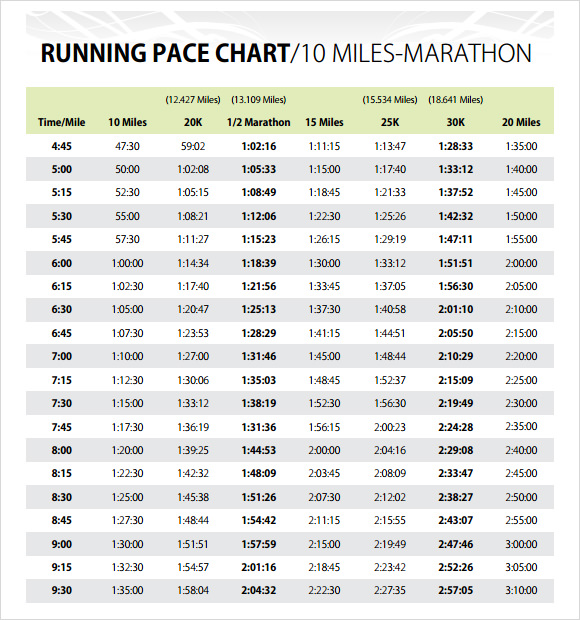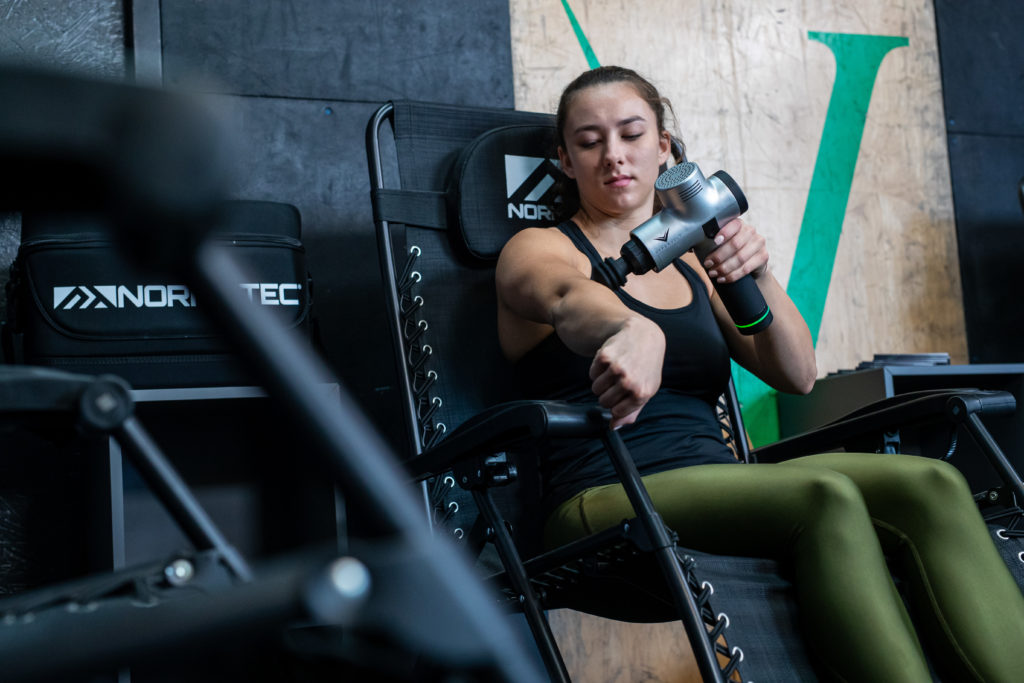What is an 8-Minute Mile Pace and Why Should You Strive For It?
An 8-minute mile pace is a challenging yet achievable goal for many runners. It translates to covering a mile in 8 minutes, which is equivalent to a speed of 7.5 miles per hour. Achieving this pace requires a combination of cardiovascular fitness, speed, and endurance. Running at an 8-minute mile pace on a treadmill can provide numerous benefits, including improved running efficiency, mental toughness, and calorie burn.
Running at a faster pace on a treadmill can help improve your running form and technique. As you increase your speed, you may find yourself focusing more on your posture, foot strike, and arm swing. Maintaining proper form can help reduce the risk of injury and improve your overall running efficiency. Additionally, running at a challenging pace can help boost your mental toughness and resilience. It can help you push through discomfort and fatigue, both on the treadmill and during outdoor runs.
Furthermore, running at an 8-minute mile pace on a treadmill can help you burn more calories and improve your cardiovascular fitness. High-intensity interval training (HIIT) workouts, which involve alternating between high-intensity and low-intensity intervals, can be particularly effective for burning calories and improving fitness. By incorporating HIIT workouts into your treadmill routine, you can challenge yourself and see significant improvements in your running performance.
In summary, an 8-minute mile pace on a treadmill is a worthy goal that can provide numerous benefits for runners. By improving your cardiovascular fitness, speed, and endurance, you can become a more efficient and resilient runner. Additionally, by incorporating interval training and strength training into your routine, you can further challenge yourself and see significant improvements in your running performance.
Assessing Your Current Fitness Level: Evaluating Your Treadmill Running Pace
Before you start training for an 8-minute mile pace on a treadmill, it’s essential to assess your current fitness level and running pace. This will help you determine your starting point and set realistic goals for improving your speed. Here are some tips for evaluating your treadmill running pace:
- Warm-up: Start by warming up for 5-10 minutes at a comfortable pace. This will help increase your heart rate and prepare your body for exercise.
- Increase speed gradually: Gradually increase your speed every 30 seconds to 1 minute until you reach a pace that feels challenging but sustainable. This will help you determine your current running pace.
- Record your pace: Use the treadmill’s display screen to record your pace in miles per hour (mph) or minutes per mile (mm:ss). This will give you a baseline measurement to track your progress over time.
- Set realistic goals: Based on your current running pace, set realistic goals for improving your speed. Aim to decrease your pace by 15-30 seconds per mile every 2-4 weeks, depending on your fitness level and training schedule.
- Consider a fitness test: If you’re unsure of your current fitness level, consider taking a fitness test, such as a beep test or a mile run. This will give you a more accurate measurement of your cardiovascular fitness and running pace.
By assessing your current fitness level and running pace, you can create a training plan that’s tailored to your needs and goals. This will help you improve your speed and endurance in a safe and sustainable way, ultimately leading to a faster 8-minute mile pace on a treadmill.
Choosing the Right Treadmill Settings: Incline, Speed, and Programs
To achieve an 8-minute mile pace on a treadmill, you need to adjust the settings to create a challenging yet manageable workout. Here are some tips for choosing the right treadmill settings:
- Incline: Increasing the incline can help simulate outdoor running and add variety to your treadmill workout. A 1-2% incline is a good starting point for maintaining proper running form and engaging your glutes and hamstrings. However, avoid setting the incline too high, as it can put extra strain on your knees and hips.
- Speed: To achieve an 8-minute mile pace on a treadmill, you need to set the speed to 7.5 mph. However, if you’re new to treadmill running or have a lower fitness level, start with a slower pace and gradually increase it over time. Aim to increase your speed by 0.1-0.2 mph every 2-4 weeks, depending on your fitness level and training schedule.
- Programs: Many treadmills offer pre-programmed workouts that can help you achieve your fitness goals. Look for programs that include interval training, hill climbs, or tempo runs. These programs can help you improve your speed, endurance, and overall running performance. Some treadmill models also offer advanced features for interval training and pace control, such as the Peloton Tread or the NordicTrack Commercial 1750.
By adjusting the treadmill settings to create a challenging yet manageable workout, you can improve your running efficiency, speed, and endurance. Aim to vary your treadmill workouts by incorporating different inclines, speeds, and programs. This will help keep your workouts interesting and engaging, ultimately leading to a faster 8-minute mile pace on a treadmill.
Incorporating Interval Training: HIIT and Fartlek Workouts for Speed
Interval training is a powerful tool for improving your speed and endurance on a treadmill. By alternating between high-intensity and low-intensity intervals, you can challenge your body and push yourself to new heights. Here are two types of interval training to consider:
- High-Intensity Interval Training (HIIT): HIIT workouts involve short bursts of high-intensity exercise followed by periods of active recovery. For example, you might sprint at 10 mph for 30 seconds, then walk at 3 mph for 60 seconds. This cycle repeats for a total of 10-20 minutes. HIIT workouts are highly effective for improving your cardiovascular fitness and burning calories. They can also help you achieve an 8-minute mile pace on a treadmill by increasing your speed and endurance.
- Fartlek workouts: Fartlek workouts involve varying your pace throughout your run. For example, you might run at a moderate pace for 5 minutes, then sprint for 1 minute, then jog for 2 minutes. This cycle repeats for a total of 20-30 minutes. Fartlek workouts are a great way to add variety to your treadmill workouts and challenge your body in new ways. They can also help you improve your running efficiency and mental toughness.
To incorporate interval training into your treadmill workouts, start by warming up for 5-10 minutes at a comfortable pace. Then, increase your speed to a challenging yet manageable pace for the high-intensity interval. After the high-intensity interval, decrease your speed to a slower pace for the active recovery interval. Repeat this cycle for the duration of your workout. Aim to incorporate interval training into your treadmill workouts 1-2 times per week, depending on your fitness level and training schedule.
By incorporating interval training into your treadmill workouts, you can improve your speed, endurance, and overall running performance. Whether you prefer HIIT or Fartlek workouts, there are many ways to challenge yourself and push yourself to new heights. So, get creative and have fun with your treadmill workouts!
Strength Training for Runners: Building a Strong Foundation
Strength training is an essential component of any runner’s training plan, whether you’re training for an 8-minute mile pace on a treadmill or a marathon. By building a strong foundation of strength and stability, you can improve your running efficiency, reduce your risk of injury, and increase your overall performance.
Here are some examples of strength training exercises that can help improve your treadmill running pace:
- Squats: Squats are a compound exercise that targets the legs and glutes. They can help improve your running efficiency and power, as well as reduce your risk of injury. To perform a squat, stand with your feet hip-width apart and your arms at your sides. Lower your body as far as you can by pushing your hips back and bending your knees. Pause, then slowly push yourself back to the starting position.
- Lunges: Lunges are another compound exercise that targets the legs and glutes. They can help improve your balance, stability, and running form. To perform a lunge, stand with your feet hip-width apart and take a step forward with one foot. Lower your body until your front knee is at a 90-degree angle and your back knee is hovering above the ground. Pause, then slowly push yourself back to the starting position.
- Planks: Planks are a core exercise that can help improve your posture, stability, and running efficiency. To perform a plank, get into a push-up position with your hands shoulder-width apart and your feet hip-width apart. Lower your forearms to the ground and hold your body in a straight line from your head to your heels. Hold for 30-60 seconds, then rest for 30 seconds. Repeat for 3-5 sets.
To incorporate strength training into your treadmill running plan, aim to perform 2-3 strength training sessions per week, in addition to your treadmill workouts. Start with bodyweight exercises like squats, lunges, and planks, then gradually increase the intensity by adding weight or resistance. Be sure to focus on proper form and technique, and listen to your body to avoid overtraining or injury.
By incorporating strength training into your treadmill running plan, you can build a strong foundation of strength and stability that will help you achieve your goals and improve your overall performance.
Nutrition and Hydration: Fueling Your Body for Optimal Performance
Proper nutrition and hydration are crucial components of any exercise routine, and treadmill running is no exception. Eating the right foods and staying hydrated can help improve your endurance, speed, and overall performance, allowing you to achieve your goal of an 8-minute mile pace on a treadmill.
Here are some tips for fueling your body before, during, and after your treadmill workouts:
- Before your workout: Aim to eat a light snack or meal 1-3 hours before your treadmill workout. This will help provide your body with the energy it needs to perform at its best. Good pre-workout snack options include bananas, whole grain toast with almond butter, or a small bowl of oatmeal with berries.
- During your workout: If you’re doing a longer treadmill workout (60 minutes or more), consider sipping on water or a sports drink to stay hydrated. Sports drinks can help replace electrolytes and provide additional energy for longer workouts.
- After your workout: Aim to refuel your body within 30-60 minutes of your treadmill workout. This will help promote muscle recovery and growth. Good post-workout snack options include chocolate milk, Greek yogurt with fruit, or a protein shake.
In addition to these tips, it’s important to focus on eating a balanced diet that includes a variety of fruits, vegetables, whole grains, lean proteins, and healthy fats. This will help ensure that your body has all the nutrients it needs to perform at its best.
When it comes to hydration, aim to drink at least 8-10 cups of water per day, and more if you’re doing intense or prolonged exercise. You can also use a hydration calculator to determine how much water you should be drinking based on your weight, age, and activity level.
By focusing on proper nutrition and hydration, you can help improve your treadmill running pace and achieve your fitness goals.
Rest and Recovery: The Importance of Balancing Training and Rest
When it comes to achieving an 8-minute mile pace on a treadmill, it’s important to remember that rest and recovery are just as important as training. In fact, taking time to rest and recover can actually help improve your running pace and endurance over time.
Here are some tips for balancing your training and rest, and incorporating active recovery techniques into your routine:
- Schedule rest days: Make sure to schedule at least 1-2 rest days per week, where you avoid intense exercise and allow your body to recover. This can help prevent overtraining and reduce the risk of injury.
- Listen to your body: Pay attention to how your body feels during and after your workouts. If you’re feeling fatigued or experiencing pain, it may be a sign that you need to take a break and rest.
- Incorporate active recovery techniques: Active recovery techniques such as stretching, foam rolling, and yoga can help promote muscle recovery and reduce soreness. Aim to incorporate these techniques into your routine 1-2 times per week, especially after intense workouts.
- Get enough sleep: Sleep is essential for muscle recovery and growth. Aim to get at least 7-8 hours of sleep per night, and prioritize sleep as part of your training plan.
- Cross-train: Cross-training activities such as swimming, cycling, or strength training can help improve your overall fitness and reduce the risk of injury. Aim to incorporate these activities into your routine 1-2 times per week, in addition to your treadmill workouts.
By balancing your training and rest, and incorporating active recovery techniques into your routine, you can help improve your running pace and endurance over time. Remember, rest is just as important as training when it comes to achieving your fitness goals.
Staying Motivated and Accountable: Tips for Long-Term Success
Maintaining an 8-minute mile pace on a treadmill can be challenging, both physically and mentally. To stay motivated and accountable, it’s important to track your progress, set achievable goals, and find a supportive running community.
Here are some tips for staying motivated and accountable on your journey to achieving an 8-minute mile pace on a treadmill:
- Track your progress: Keep track of your treadmill running pace and endurance over time. This can help you see how far you’ve come and motivate you to keep pushing yourself. Consider using a fitness tracker or app to help you track your progress.
- Set achievable goals: Set specific, measurable, and achievable goals for your treadmill workouts. This can help you stay focused and motivated, and give you a sense of accomplishment when you reach your goals.
- Find a supportive running community: Surround yourself with other runners who can provide support and encouragement. Consider joining a running group or online community, or finding a workout buddy who shares your goals.
- Mix up your workouts: Avoid getting bored with your treadmill workouts by mixing up your routine. Try incorporating interval training, hill workouts, or Fartlek runs to keep things interesting.
- Reward yourself: Celebrate your achievements along the way. Whether it’s treating yourself to a new running outfit or taking a rest day to relax and recover, rewards can help keep you motivated and accountable.
Remember, achieving an 8-minute mile pace on a treadmill is a journey, not a destination. By tracking your progress, setting achievable goals, finding a supportive running community, and mixing up your workouts, you can stay motivated and accountable on your journey to improved cardiovascular fitness, speed, and endurance.









